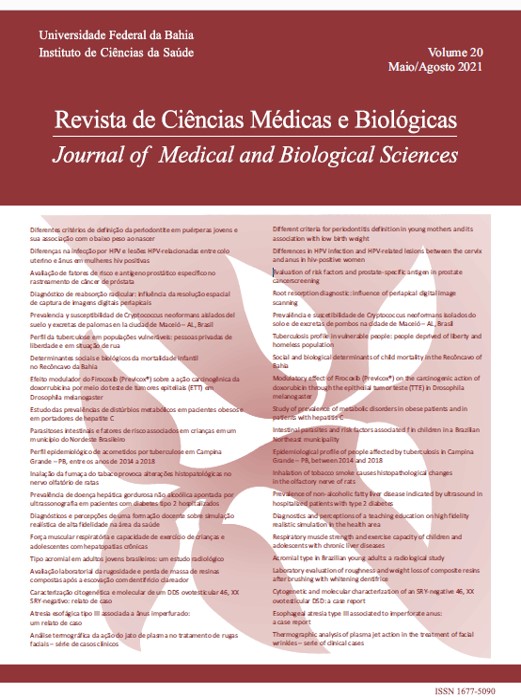Acromial type in Brazilian young adults
a radiological study
DOI :
https://doi.org/10.9771/cmbio.v20i2.42201Mots-clés :
Acromion. Scapula. Shoulder pain. Radiography.Résumé
Introduction: Acromion curved and hooked play a key role in shoulder impingement syndrome. Little is known about the acromial type in Brazilian population. Aim: To describe the acromial type profile in Brazilian young adults; to evaluate its correlation to gender and handedness and the occurrence of symmetry between genders. Methodology: Forty acromions of 20 Brazilian adults, both genders, between 21-25 years old were studied. The acromion type was classified by Bigliani/Epstein method by supraspinatus outlet view radiographs. Results: As there was no gender difference in the occurrence of acromial type, we considered male and female groups together. Thus, of the 20 right acromions, we found 5 (25%) type I, 8 (40%) type II and 7 (35%) type III. Of the 20 left acromions, we found 4 (20%) type I, 11 (55%) type II and 5 (25%) type III. The only left-handed volunteer (100%) presented for the right and left shoulder acromial type III. Of the 19 right-handed volunteers, 5 (26.3%) presented right acromion type I, 8 (42.1%) type II, and 6 (31.6%) type III; for the left acromion, 4 (21.1%) presented type I, 11 (57.9%) type II, and 4 (21.1%) type III. Acromial symmetry occurred in female (60%) and male (70%) groups. Conclusion: Type II acromion was the most predominant for right and left shoulder in Brazilian young adults. There was no correlation between acromial type and gender. It was not possible to analyze the correlation between acromial type and handedness. Acromial type tends to be symmetric in our sample.
Téléchargements
Téléchargements
Publiée
Comment citer
Numéro
Rubrique
Licence
(c) Tous droits réservés Revista de Ciências Médicas e Biológicas 2021

Ce travail est disponible sous la licence Creative Commons Attribution 4.0 International .
A Revista de Ciências Médicas e Biológicas reserva-se todos os direitos autorais dos trabalhos publicados, inclusive de tradução, permitindo, entretanto, a sua posterior reprodução como transcrição, com a devida citação de fonte. O periódico tem acesso livre e gratuito.






